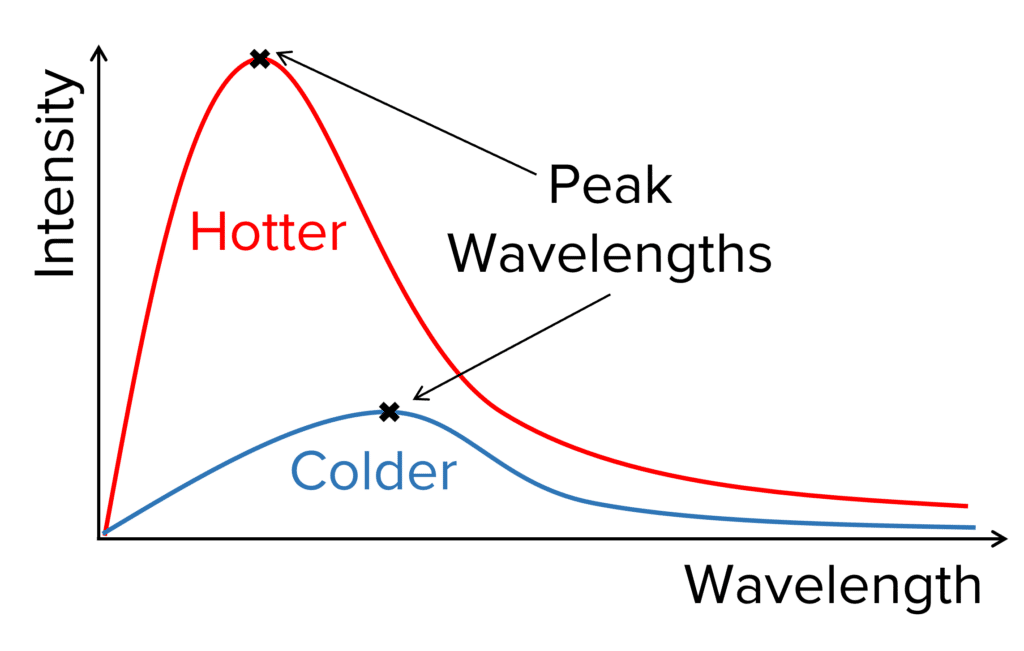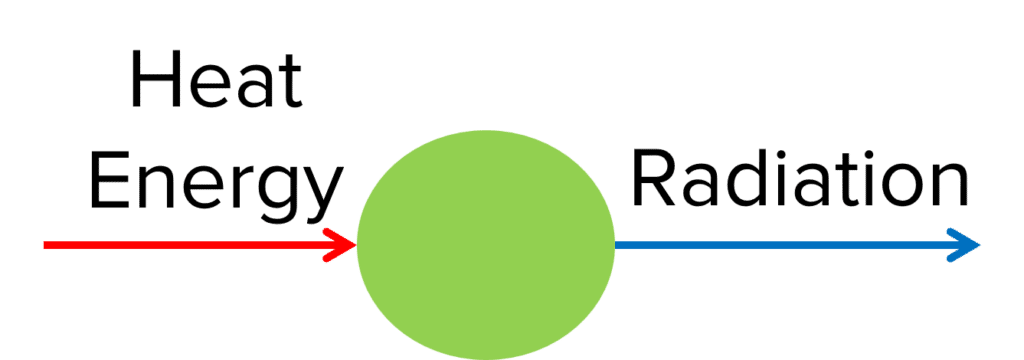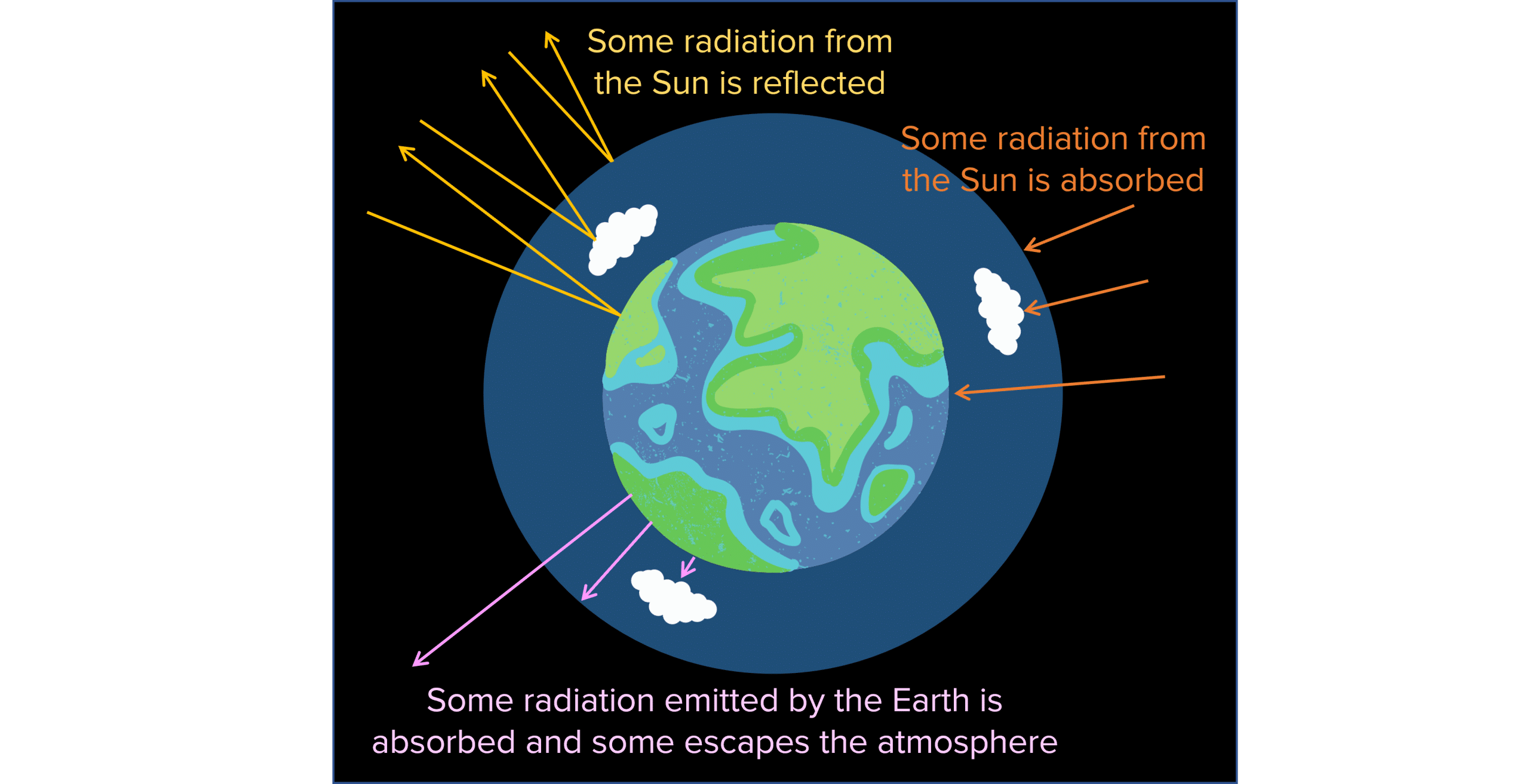Black Body Radiation
Black Body Radiation Revision
Black Body Radiation
All bodies (objects) absorb and emit radiation. The amount of radiation emitted depends on the temperature of the object.
Black Bodies
A perfect black body is an object that absorbs all of the radiation that it comes in contact with. This means that it does not transmit or reflect any radiation.
Black bodies are also the best possible emitters of radiation. This means they transfer heat energy to radiation as efficiently as possible.

The intensity and wavelength distribution of the radiation emitted by a black body depends on the temperature of the object.
Hotter objects emit a greater intensity of every wavelength. However, the increase in intensity occurs more quickly for shorter wavelengths than longer wavelengths. This means that the peak wavelength (the wavelength with the greatest intensity) decreases.
Note:
Intensity is the power per unit area a.k.a the energy transferred to a given area in a period of time.
Temperature Balance
The temperature of an object depends on the amount of heat energy the object has. The heat energy increases when energy is transferred into the object and decreases when the object emits radiation.

If an object is at a constant temperature, then the heat energy going in to the object is equal to the energy lost by the object via radiation.
When an object emits radiation faster than it gains energy, it cools down.
When an object gains energy faster than it emits radiation, it heats up.
The Temperature of the Earth
The temperature of the Earth depends on a range of factors. These include:
- The rate of absorption of radiation from the Sun.
- The rate of emission of radiation.
- The amount of radiation that is reflected back into space.
Radiation may be absorbed or reflected by the atmosphere, clouds and the surface of the Earth.

Black Body Radiation Example Questions
Question 1: Define a “perfect black body”.
[2 marks]
A perfect black body is an object that absorbs all of the radiation that it comes in contact with.
This means that it does not transmit or reflect any radiation.
Question 2: Describe how the intensity spectrum of radiation emitted from a colder object differs from the intensity spectrum of a hotter object.
[2 marks]
All wavelengths are emitted at lower intensities for the colder spectrum.
The peak wavelength is longer (further to the right) for the colder spectrum.
Or vice versa.
Question 3: An metal ball is heated by a flame at 4 \text{ J/s}. It emits radiation at a rate of 2 \text{ J/s}. Explain what happens to the temperature of the metal ball.
[3 marks]
The metal ball is gaining more heat than it is radiating.
This means the overall heat energy of the ball increases.
So the metal ball gets hotter.
Question 4: Name two factors that affect the temperature of the Earth.
[2 marks]
Any two from:
- The rate of absorption of radiation from the Sun.
- The rate of emission of radiation.
- The amount of radiation that is reflected back into space.
Black Body Radiation Worksheet and Example Questions
Black Body Radiation Questions
GCSEOfficial MME
MME Premium Membership
£19.99
/monthLearn an entire GCSE course for maths, English and science on the most comprehensive online learning platform. With revision explainer videos & notes, practice questions, topic tests and full mock exams for each topic on every course, it’s easy to Learn and Revise with the MME Learning Portal.
Sign Up Now
